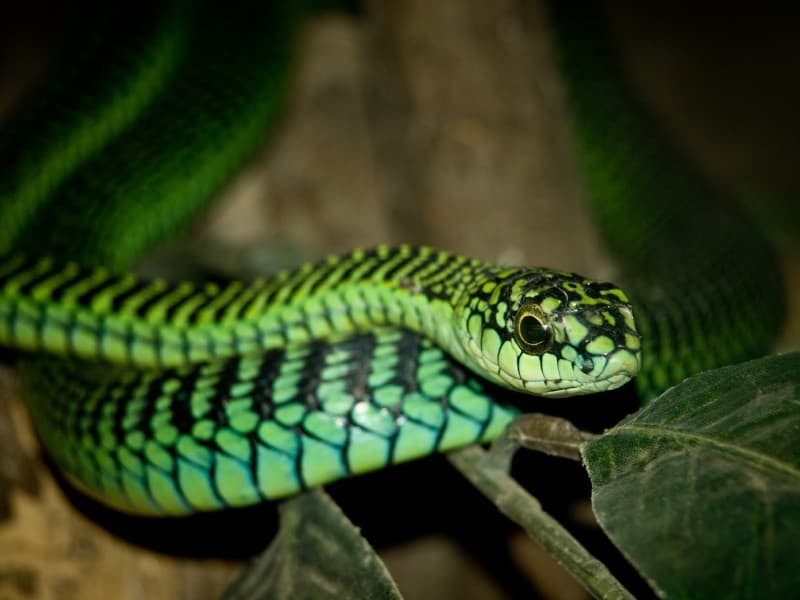 Source: http://bit.ly/1ELXAq0 Photo: William Warby CCL: http://bit.ly/2xQPH8p
Source: http://bit.ly/1ELXAq0 Photo: William Warby CCL: http://bit.ly/2xQPH8p
Boomslang Facts
- The somewhat distinctive term of Boomslang serves as the common name for a particularly impressive species of dangerous reptile. The remarkably impressive animal also goes by the scientific name of the Dispholidus typus, however.
- Whichever name one uses to refer to it, though, this truly amazing reptile constitutes a relatively large variety of highly venomous snake, in the family Colubridae. Currently, it also represents the only known extant member of its genus.
- In Afrikaans, the name boomslang means tree snake. This astonishing reptile remains reclusive and shy in temperament, and would not attack unless truly under threat. It also prefers thorny bushes which make it extremely hard to catch.
- Since it is non-aggressive, the only problems arise when people, especially children, try to catch or kill it. For the moment, at least, the population numbers of the amazing Boomslang further appear to be both sufficient, and relatively stable.
- This holds true throughout the entirety of its native range. The IUCN therefore currently lists it as Least Concern. This status appears on the organization’s Red List. It must nonetheless be considered to be at some risk, due to climate change.
Related Articles
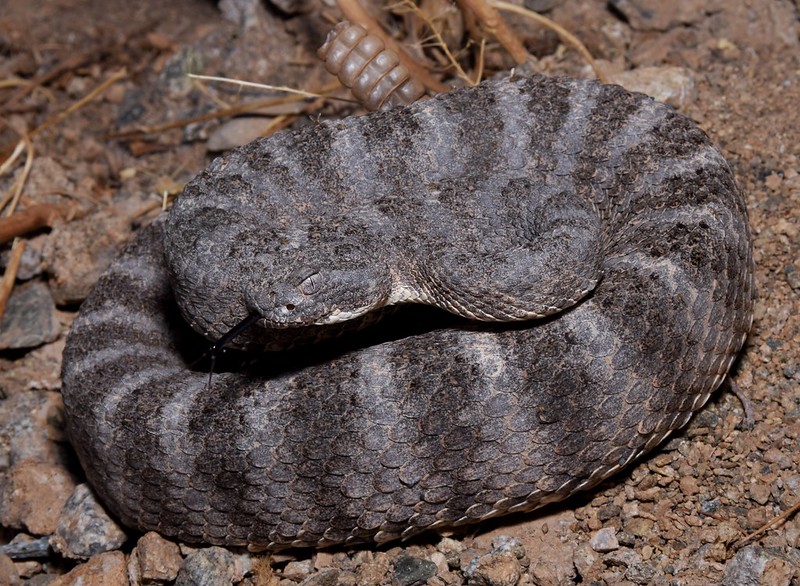
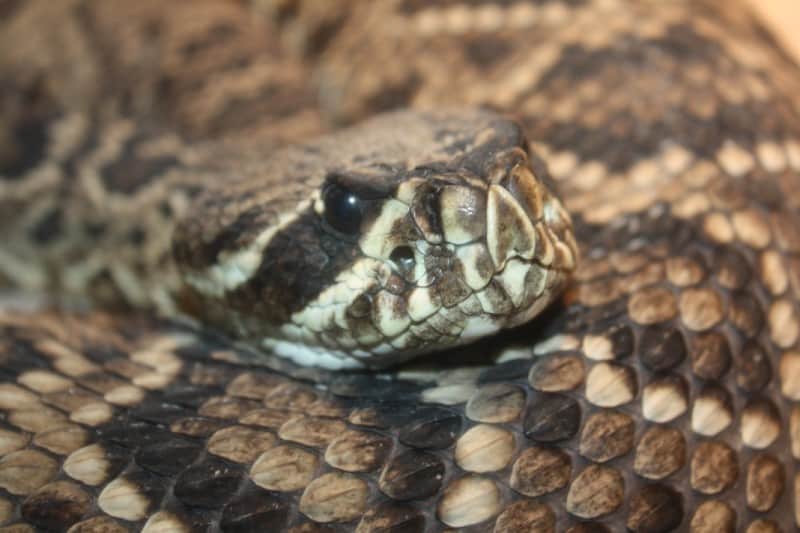
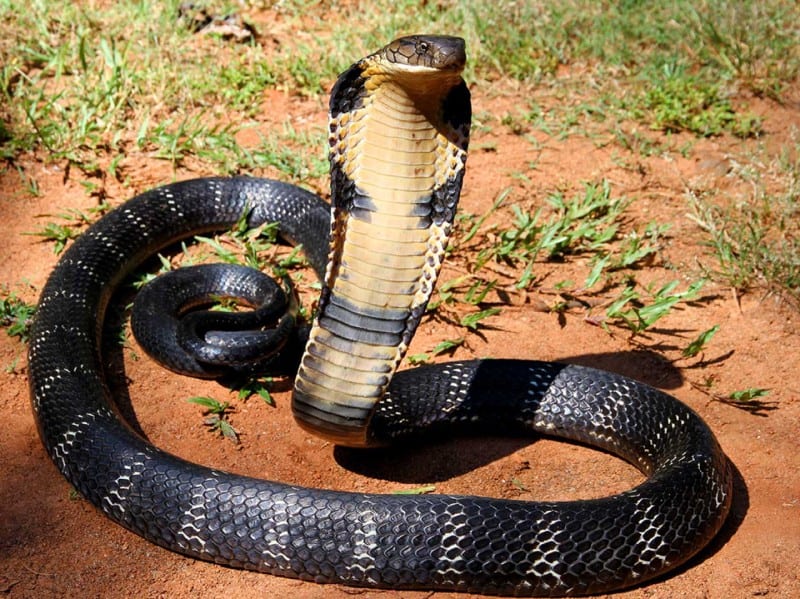
Boomslang Physical Description
The magnificent Boomslang also remains a highly respectable snake due to sheer physical size. And that’s in addition to its many other attributes. This holds true given the fact that mature adults of the species attain a length of as much as 6 ft (183 cm).
But, mature adults most commonly average slightly less than that. Not only that, the eyes of this particular snake develop as comparatively large. In point of fact, these develop as so large that they actually make up a good proportion of the head.
In addition to this, the fascinating Boomslang, shares a characteristic with many related creatures. It also displays a mild degree of the physiological trait of sexual dimorphism. In its case, however, this trait manifests itself in the coloring of the genders.
The male of the species typically displays a light green with black scale edges while the females usually appear light brown in color. The fangs of the incredible snake also grow longer than most arboreal snakes and are larger in the back of the mouth.
- Kingdom: Animalia
- Phylum: Chordata
- Class: Reptilia
- Order: Squamata
- Family: Colubridae
- Genus: Dispholidus
- Species: D. typus
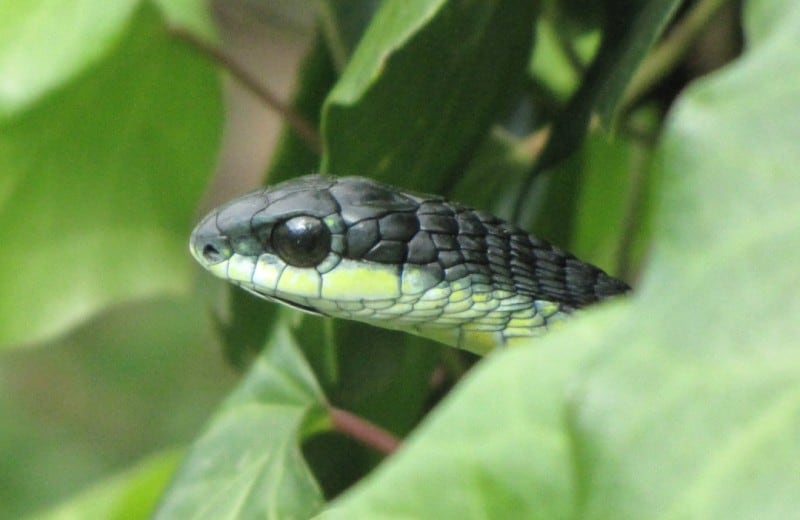
Boomslang Distribution, Habitat, and Ecology
The fascinating animal known simply as the Boomslang evolved as endemic to a moderately restricted portion of the world. But, the general area remains renowned for teeming with wildlife. It evolved as native to a certain, and surprising, area of the continent of Africa.
This highly dangerous species evolved to inhabit a particularly harsh section of the region, that of the sub-Saharan portions of the continent. In nature, though, it represents an oviparous animal, frequently producing as many as 30 eggs with each mating.
These the amazing reptile typically places in tree trunks or rotting logs. A usual incubation period is on average three months. This rather fascinating moderate-sized variety of snake primarily feeds on prey such as small mammals, reptiles, and birds.
This particular deceptively dangerous species further evolved as diurnal in nature and remains almost entirely arboreal today. The venom of the Boomslang is also extremely potent. It qualifies as a hemotoxin, creating potentially lethal internal bleeding.
It also makes the victim bleed from its gums, nose and all orifices until it dies. Respiratory arrest and cerebral hemorrhage are rather common results after a bite. The venom also acts slowly, easily up to five days, often causing victims to dangerously delay treatment.
Species Sharing Its Range
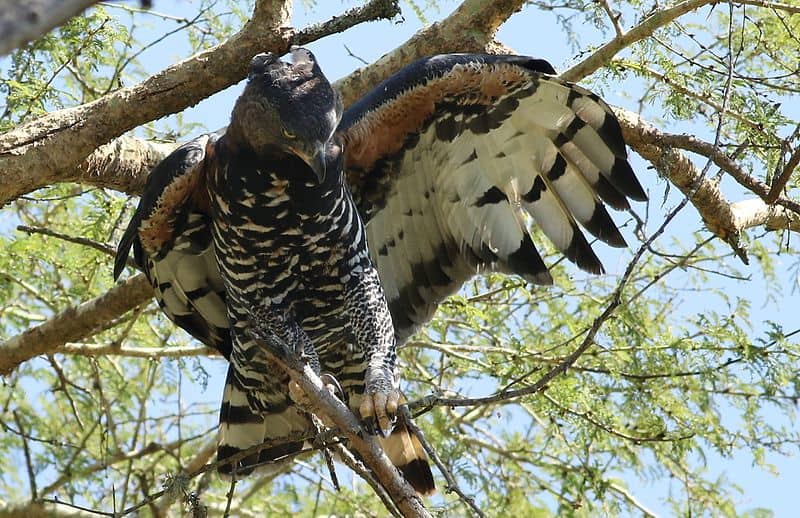

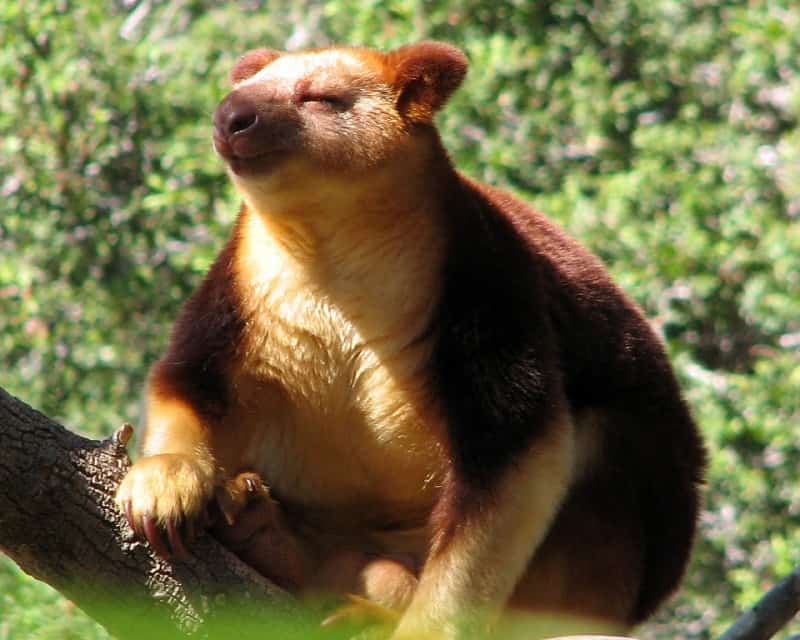
Check out our other articles on Olive Sea Snake, Laguna Verde, King Cobra, Evening Cicada, Green Anaconda, Tiger Rattlesnake, Black Banded Sea Krait, 6 Marine Apex Predators, Petra Iris










Leave a Reply